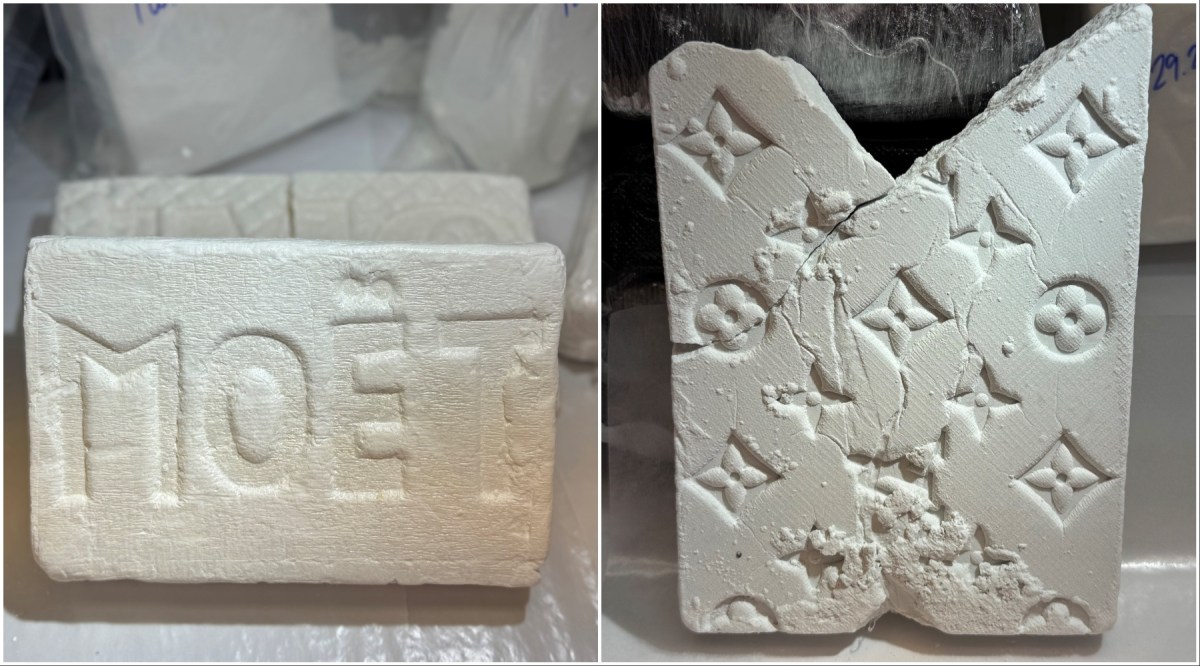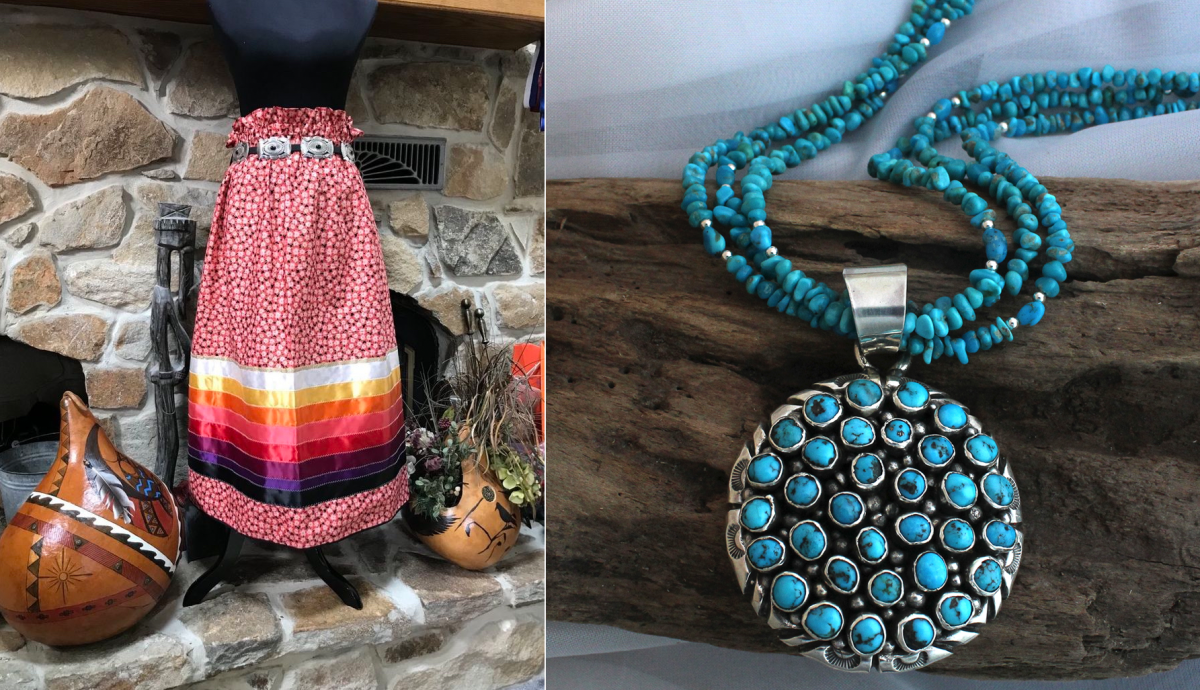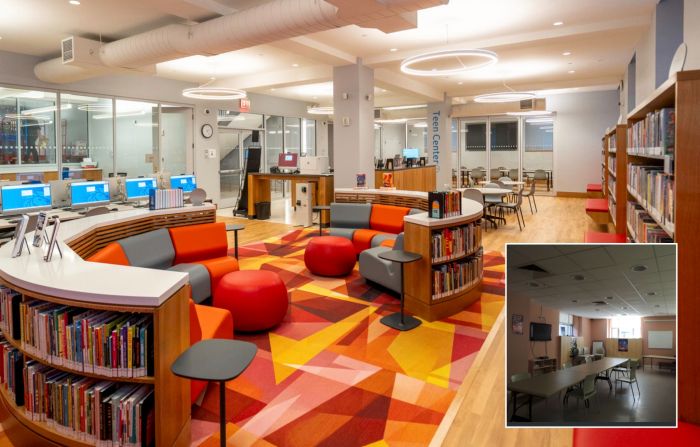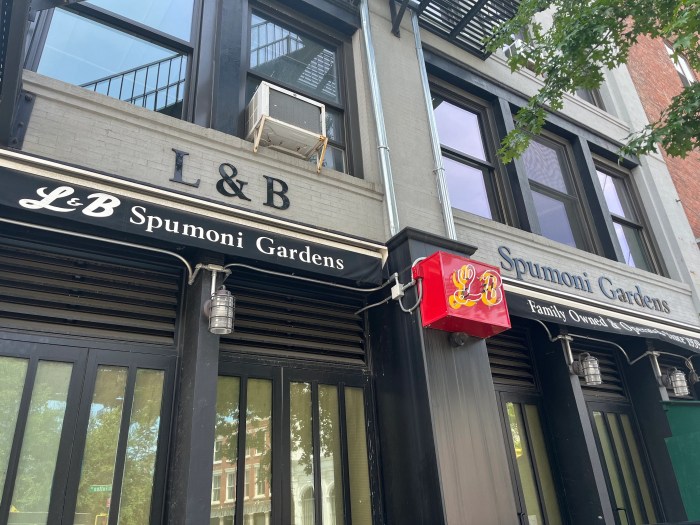By Tata Dougherty
Barbara Kruger’s campaign to banish cynicism survives GOP hijacking of her favorite color
In college lectures in the early 1990s, few artists were as frequently covered as Barbara Kruger. Her images found their way into the curriculum of several of my classes, even beyond the art history department. Once I began my career in the art world employed by the gallery that represents her, I was surprised that her work always seemed undervalued in comparison to other artists of her stature.
In the aftermath of her recent traveling retrospective, the commercial market for Kruger’s work has risen. Her New York gallery has mounted two exhibitions this year, and one of her most important works, “I Shop Therefore I Am,” recently sold for more than $600,000.
However, compared to the work of other photo-based artists from the 1980s, her work is still reasonably obtained, if you happen to be in the market for buying art.
If you are not, however, you can still go for free and appreciate the second of her two installments this year at the Mary Boone Gallery. The exhibition is a mini-retrospective focused on the artist’s color work that ranges beyond her signature red, white and black.
The exhibition includes some recent work aimed at Pres. George W. Bush. In one, a blurry image of the president looking typically sincere but clueless is overlaid with the text “Pro-life for the unborn/Pro-death for the born.”
This being a Barbara Kruger exhibition, there is no lack of calculated political play during a heated electoral season. Besides renderings of Bush, there are ample images of the American flag, as well as a large vinyl piece with the words of the “Pledge of Allegiance” written in bold, white block letters across a Kruger-red background.
What always impresses me about Kruger’s work is how indelible it is. She engages the visual vocabulary of the popular media to interject alternative, critical or subversive questions into that flow. Her style is so much indebted to popular media that it is often ironically co-opted by it, such as on the cover of last week’s Time Out New York issue on post-election depression.
Kruger has a brilliant knack for tapping into collective insecurities and for exposing or challenging maniacal social assumptions. In one piece, a beautiful stylized photograph of a flock of male swimmers in Esther Williams swimming bonnets is overlaid with “busy” words of all sorts: “Busy strategizing… Busy judging… Busy blaming… Busy making… etc.” A 1950s leisure swim becomes a water rat race.
In another work aimed at commerce, power and business, a black-and-white image of two hands coming together in a handshake over a map is provocatively overlaid with the words “Admit nothing/Blame Everyone/Be Bitter.”
In spite of its typical tone of sharp criticism, one of the strongest qualities in Barbara Kruger’s work is its sometimes-poetic sense of hopefulness. Her work clearly opposes abuse of power, injustice and hypocrisy. In challenging these evils, Kruger presents an enlightened alternative to business as usual.
This quality is nowhere more evident than in a magnificent piece, which hangs just around the corner in the gallery office. It’s my personal favorite. It features a little green bird standing in an open palm. In the upper left corner reads “Let,” and in the lower right “Go.” Wise words, no matter the context. Definitely peek around the corner and have a look for yourself.
WWW Downtown Express


































